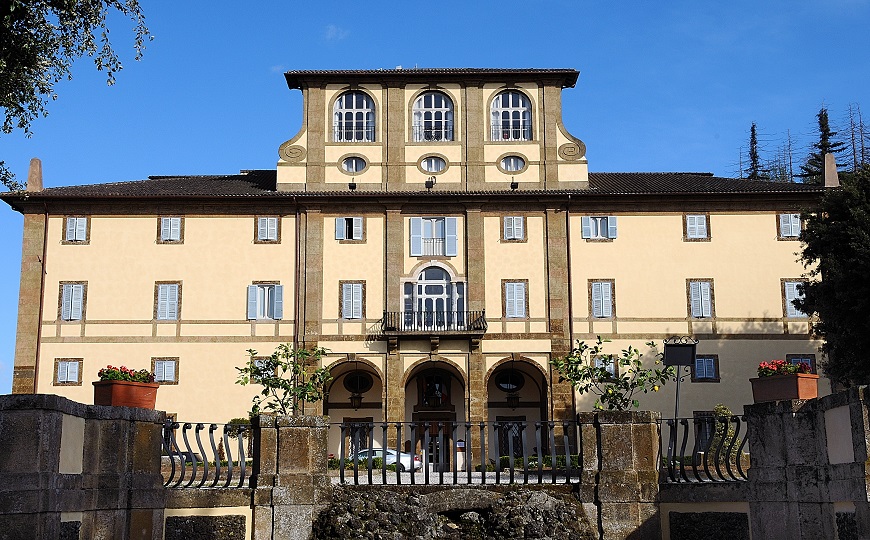The original building was rectangular to which a perpendicular structure was added by Vanvitelli forming a T-shape layout. The villa was arranged over four floors with two of them higher than the others.
The façade divided by pillars includes a three-arched portico. The top floor is embellished by a belvedere loggia from where you admire the beautiful panorama of the campagna romana. Only traces of the original nymphaeum and gardens remain while among the park’s monuments just the terracing in front of the facade, featuring a small shell shape fountain, has been conserved.
The Villa “Tuscolana Ruffinella” has had several owners. In 1578, it became property of the Apostolic Chamber and was then sold to Cardinal Guido Ferreri, San Carlo Borromeo’s nephew. After renovation work it was purchased by Cardinal Francesco Sforza, then passed on to Mario Santi di Santifiori, Cardinal Giovanni Vincenzo Gonzaga and Vincenzo Nobili. In 1604, Pope Clement VIII Aldobandini bought it as a gift for his nephew Cardinale Pietro Aldobrandini.
Following several inheritances, the Villa was purchased by the Jesuits in 1740 and converted into a convent thanks to the outstanding work of architect Luigi Vanvitelli. Later, after the suppression of the religious order (1773), the villa was returned to the Apolostic Chamber and then transferred to Luciano Bonaparte, Maria Anna di Savoia and Maria Cristina, wife of King Carlo Felice.
In 1872, Vittorio Emanuele II sold it to Elisabetta Aldobrandini who kept it until 1966, the same year in which the Salesian Order purchased it.


 Visit Castelli Romani
Visit Castelli Romani 

